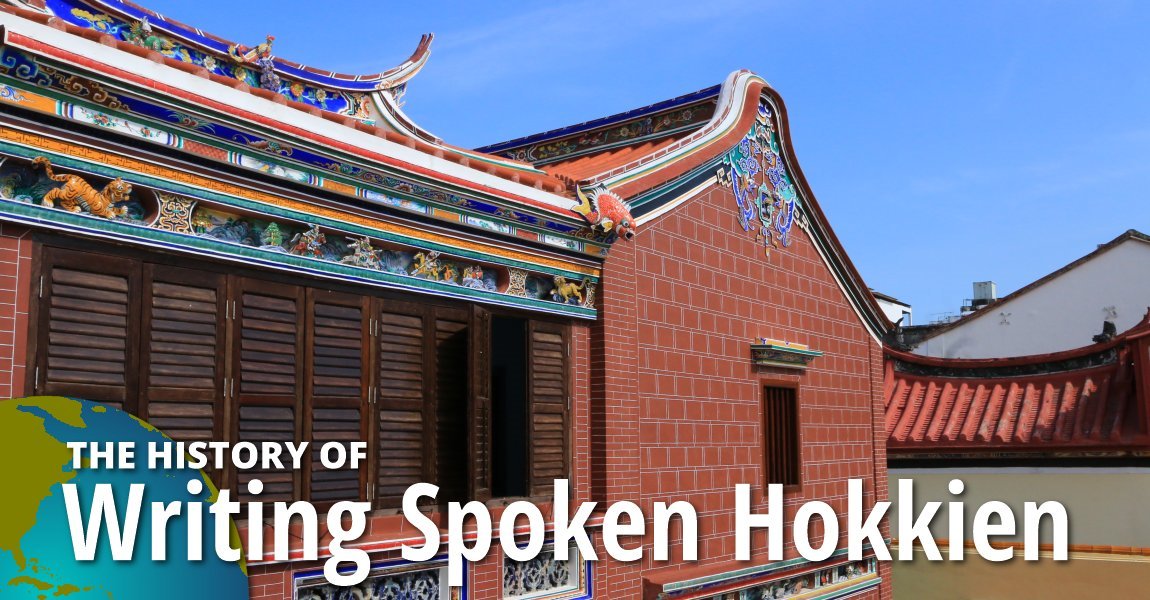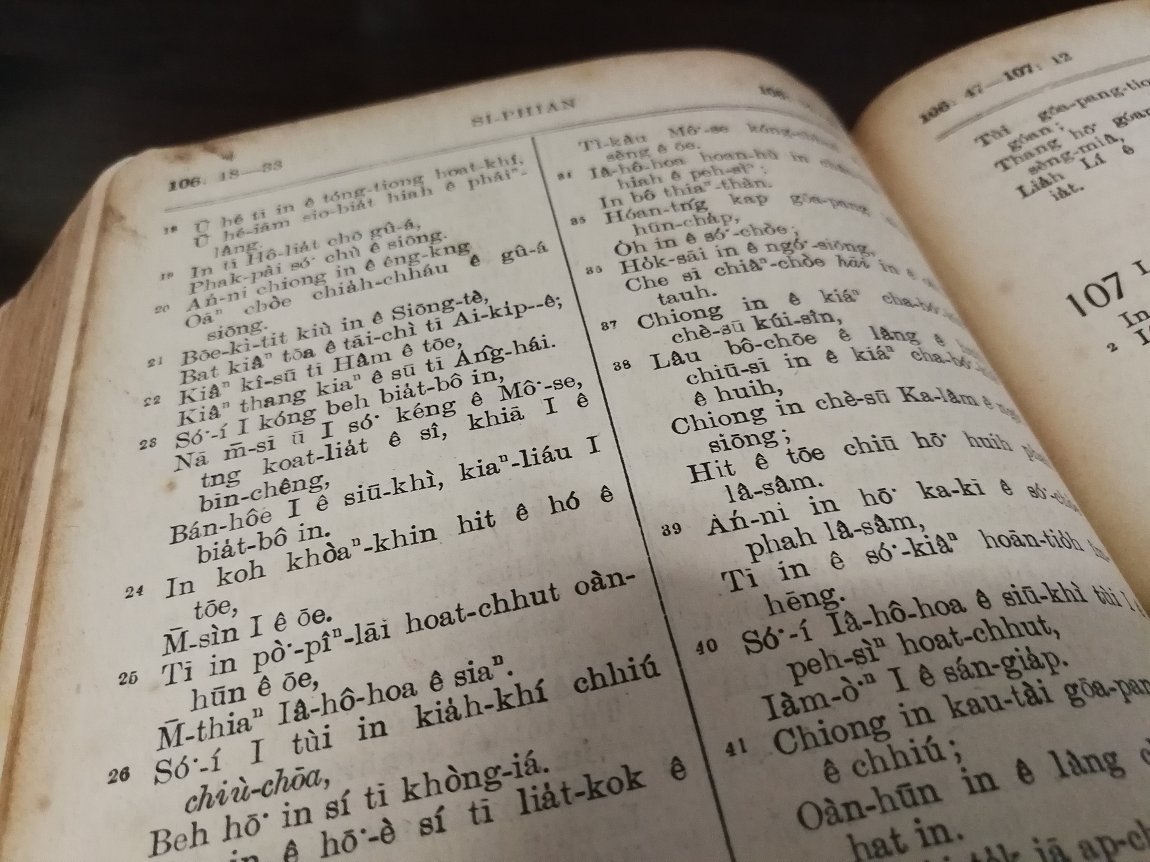 History of Writing Spoken Hokkien (4 December, 2015)
History of Writing Spoken Hokkien (4 December, 2015)
Today, you will see some people learning to write spoken Hokkien using Chinese characters. In Malaysia, among present-day Hokkien speakers, they are a small minority compared to the number of people who know Hokkien only in spoken form. If you have any interest to learn to write Hokkien using Chinese characters, it is worth knowing that this is modern way of writing Hokkien.
Hokkien has always been a spoken language, now as well as in the past. Even in 19th and 20th century Penang, Hokkien was a spoken language. Literacy was low during that time, and those who were fortunate enough to get the opportunity to go to school, or to receive some form of education, branched into two groups. If they aspired to a clerical position, they would learn to read and write in English, from Penang Free School and mission schools such as St Xavier's Institution or Convent Light Street. Even right up to the mid 20th century, the poor immigrants from China often could not read or write, and had to pay someone else to write their precious letters to their loved ones back home. On reaching their home villages, those letters had to be taken to someone who could read Chinese in order to interpret them back into spoken Hokkien.
The well-to-do merchant class might provide their children with "Chinese" education in order to be able to trade with other Chinese merchants. Those children learned Chinese with Hokkienised pronunciation. In an earlier post, I mentioned literary reading of Hokkien. This is where the children learned the pronunciation of Hokkien words, and they can use it whether to inscribe the name of their temples, or to write letters back to China.
It is worth knowing that written Chinese is different from spoken Hokkien. Written communication is not carried out using the Hokkien that the people speak, but using the Chinese language that can be read by different Chinese people, in different parts of Chinese, even though these people may speak a different Chinese language locally.
At a time before telephone was common, people communicated in writing, and the Chinese people had a wonderful solution to ensure that written communication can be understood by people in different parts of China, even though they all speak their own local languages. That's because all educated people learn the same written Chinese language, which can be remarkably different from the spoken language. It's not just in pronunciation, even the grammar is different.
Teaching children to write in Chinese fell on the shoulders of the respective clan associations. The large Chinese schools in Penang - Chung Ling High School, Penang Chinese Girls' High School, Han Chiang High School - only came into the picture much later, and by then, Standard Mandarin was already on the way to replace written Chinese as the way to read and write Chinese.
Back then as it is now, some may try to write spoken Hokkien using Chinese characters, but this is never taken seriously, especially when there's already written Chinese for them to use. There wasn't really a need to write spoken Hokkien. To communicate in writing, you write in English if you need to communicate with the British colonials, or in written Chinese, if it's intra-Chinese. So, within the Hokkien-speaking community, the situation is that you speak one way but write another way, and this is called diglossia.
 This Hokkien Bible that was given to me is in Church Romanisation. (24 June, 2018)
This Hokkien Bible that was given to me is in Church Romanisation. (24 June, 2018)
When the Christian missionaries learned of this situation, they decided to create a romanised form of writing spoken Hokkien. The purpose is to make it easier for people to read the Bible. That, to cut a long story short, was the beginning of Church Romanisation of Hokkien. That romanised form has been revised a few times, but this way of writing Hokkien is still being used, and learned by many people, today. Because it is intended for writing spoken Hokkien, the Hokkien called it Pe̍h-ōe-jī (Penang Hokkien Taiji: Paek3wa33ji33), meaning "writing of the spoken form". Despite that meaning, it has expanded to be used for romanising words that are pronounced in the literary reading. So what began as a means to romanise the colloquial pronunciation of spoken Hokkien grew to romanise all Hokkien.
In addition to Church Romanisation, several other systems to romanise Hokkien have been created, many of which are derived from Church Romanisation. The most popular is Taiwanese Romanisation, which is being used in Taiwan, to meet their own needs. As neither Church nor Taiwanese Romanisation meet my needs, I created my own romanisation for Penang Hokkien which is called Taiji Romanisation. It is not a derivative of Church Romanisation but a departure from it.
Although Church Romanisation (and all other romanisations) was a means to write spoken Hokkien, it never really caught on, because the Hokkien-speaking people never had any desire to write their spoken language. In the past, whenever they needed to write something, they fall back to using written Chinese. Nowadays, they use Mandarin. So, even though efforts were made sporadically to popularise Hokkien literacy, it never reached critical mass.
Should you learn to read Hokkien using Chinese characters? That's a personal choice. In my opinion, there's never a disadvantage for learning things. People learn Japanese, Korean, Thai, so if you feel like wanting to learn to read and write Hokkien using Chinese characters, why should anybody stop you? Just do it. But do it with an awareness of its history.
Language Learning Tools
Use the following language learning tools to learn Penang Hokkien!Learn Penang Hokkien with uTalk
This app opens the door to over 150 languages.Return to Penang Hokkien Resources

Copyright © 2003-2025 Timothy Tye. All Rights Reserved.

 Go Back
Go Back
